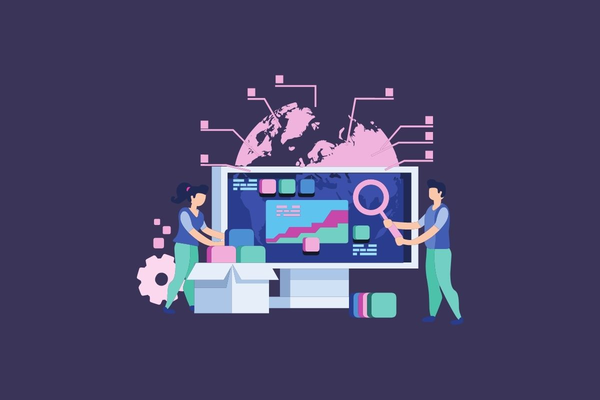If you want to learn to fly, first you have to learn how to crawl. Next, you learn how to stand, to walk, to run, and only then can you try to fly. The right training program can have a long term positive impact on employees and their team members, but deciding on the right training program is the product of proper assessment, development, delivery, and evaluation. If you don’t lay down the runway, how can you ever expect to take off?
To create and run an HR training program successfully, there are essential tasks that require careful consideration. These are:
- Assess the need for training in the workforce and create objectives.
- Design the training materials and develop the training program,
- Implement and deliver the training, and
- Evaluate the success of the training program.
An HR Training Program is an integral component of every successful business. Knowing how to create and execute an HR Training Program is invaluable and requires a specific set of skills and knowledge. Let’s explore exactly what it takes to develop a program to meet the needs of your organisation and its employees.
What is an HR Training Program?
An HR training program is an ongoing cycle in any organisation, usually led by the human resources team. It is an essential tool to improve the skills of the workforce, uplift morale, and encourage employees to work effectively towards organisational goals.
What are the Key Objectives of HR Training Programs?
If you want to plan an effective HR training program, make sure you consider these three key objectives:
- To improve employee awareness surrounding their job roles, the organisation, and their team, and familiarise them with company policies and expectations (this is especially relevant for new employees).
- To develop and sharpen specific skills, techniques, and knowledge which increase productivity and enable employees to perform a defined job role effectively.
- To increase employee confidence and morale so they can perform their job to the highest of their abilities (inclusion of employees in training empowers them to grow within the organisation).
How do you Develop an HR Training Program?
Analyse your needs
A Training Needs Analysis is performed to help determine the needs of the workforce and the best course of action. What are the organisational goals and the overall needs of the business? What are the skills, expertise, and knowledge your employees need in order to fulfill their role effectively and achieve those strategies? Once you’ve answered these questions, you’re ready to begin assessment and objective-setting.
Identify skills gaps
Now that you’ve identified the needed skills and knowledge, you can assess for gaps between these and the current competencies of the employees. This can be analysed on an individual basis, for specific teams, or for the organisation as a whole. What skills and competencies are lacking and which ones do you want to prioritise? Specific, Measurable, Attainable, Relevant, and Time-based (SMART) objectives can be determined at this point to help with the development stage.
Plan and deliver the training
The development and execution of the training is crucial to the success of a training program. Development includes identifying relevant training materials that satisfy the prioritised objectives, and deciding on how the content will be delivered. By setting benchmarks for the objectives created in the previous stage, it will help to direct you as to the best training methods, taking into account the learning styles of your trainees.
Delivering the content of your training program is the culmination of your previous efforts. After identifying the needs, assessing for deficits, developing a relevant training program, all of it will be for naught if you don’t have an effective delivery. There are extensive resources available for teaching modalities and, depending on the content you’re delivering, the audience, and the complexity, you’ll want to customise your delivery to ensure optimal learning.
Evaluation
The evaluation stage lets you gather feedback from participants to understand and assess if the training was successful according to your predetermined objectives. It is a valuable learning tool to improve future training and to circulate back to the first stage of Analysis of skills and expertise needed. The more data you collect on measurable outcomes, the easier it will be to quantify your company’s return on investment.
What Tools Can Help You Improve Your Training?
Getting a corporate training program right can be challenging initially, so the best way to improve it comes with practice. To get the most out of your training programs, we have a few tips and tricks which might more you in right direction:
DISC Training
DISC is a behavioural self-assessment tool based on four main personality traits Dominance, Influence, Steadiness and Compliance and is used widely among HR professionals across many industries to enhance behavioural performance, productivity, employee retention and wellbeing.
HR Profiling Solutions offers the globally recognised DISC certification, a training workshop focusing on behavioural analysis tools that provide a framework for understanding human behaviour more profoundly. DISC training enables you to become a DISC trainer, a credible certification to conduct DISC profile workshops and introductory courses.
Use blended learning
Not all training methods work for everyone, and by using one specific style during training, you’re likely to alienate other learning styles which can quickly bore or demotivate learners. By mixing up the training methods between e-learning and instructor-led training (ILT), making it blended or “hybrid” learning encourages different ways to learn and practice a skill and makes for an easier transition to the workplace.
Training analysis and evaluation
Though this may be obvious to some, it’s crucial to take the learner assessments and evaluations seriously so you can:
- identify and fix skill gaps
- effectively structure your training programs to reflect your SMART objectives
- learn from feedback to improve for future training
- get a feel of the overall progress of your training program
- recognise and reward training effort
- discover your top talent.
Create learning paths
If you think of your training program as an educational journey rather than a string of different courses, your trainees, and hopefully your organisation, will benefit more from it. By creating multiple learning paths for employees, you’re considering their long term goals and career aspirations and helping them progress to greater roles.
Gather feedback from long term employees and sit with team leaders and management to determine a mid to long term training strategy for newer employees. Some courses may be suitable for different employees on similar learning paths so work with them to choose the best courses for their career goals as they coincide with organisational objectives
By investing in employees in this way, organisations can retain highly skilled staff, reduce recruitment costs at higher levels, and maintain high morale within the workforce.
What to Consider When Running Your Training Program
A few other considerations when running your training program include:
Budget – determine the tools you can use for the training, the location, and the resources
Learning styles – consider the learning styles of your trainees to determine some of the best training methods to use.
Delivery mode and style – What is the best method to use for delivery? Most training uses a variety of methods to give trainees the best chance at learning, but this may vary by content.
Content development – what will be taught and how will you sequence the information?
Communication of training – How to market the training, how will employees know it will be available to them, and how to encourage them to take part.
How to Measure Results
Evaluation is an integral part of training. There are various ways in which a training session can be evaluated. Evaluate how the training has influenced the participants’ performance and deliverables at work by using a combination of these methods:
- Self-assessment: Pre- and post- training questionnaires help to clarify expectations vs delivery
- Post-training quizzes or demonstrations
- One-on-one discussions
- Employee surveys
- Focus groups
- On-the-job observation, were the learners able to apply what they learned?
- Behaviour: Actual job performance key performance indicators (KPIs)
- Official certification exams
It is helpful to determine which performance evaluation methods you’ll be using and what factors you’ll be measuring during the development stage before training delivery begins.




